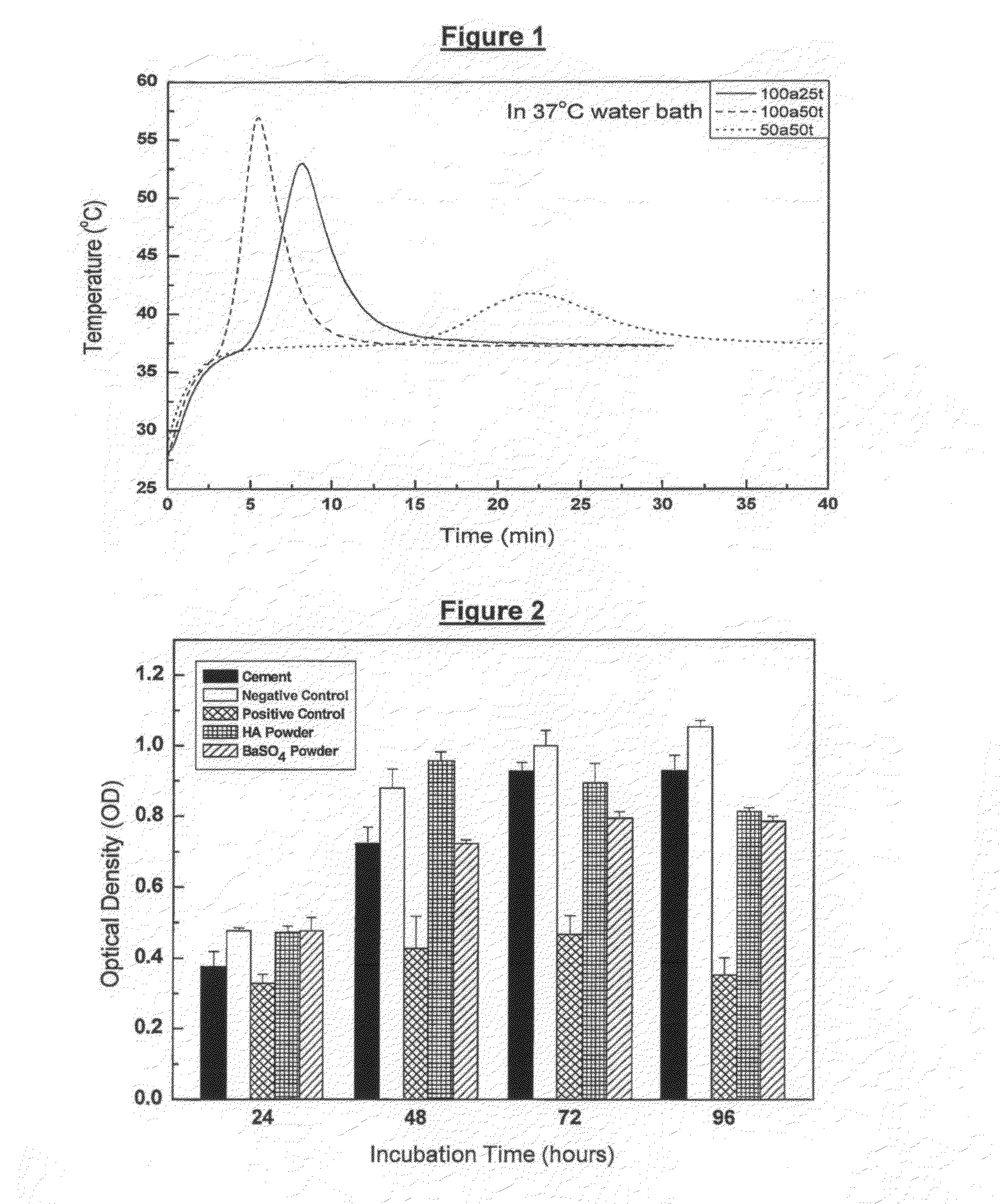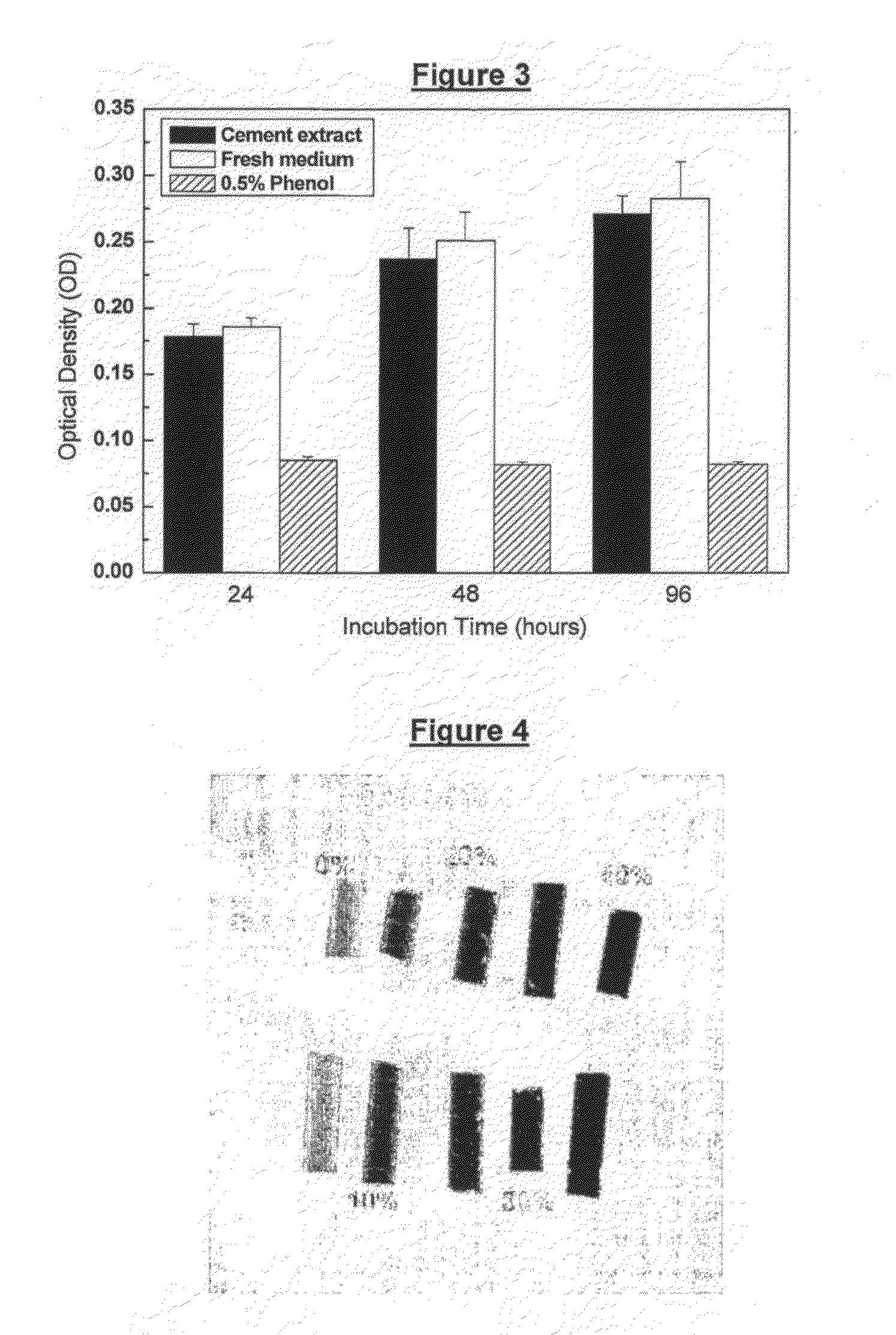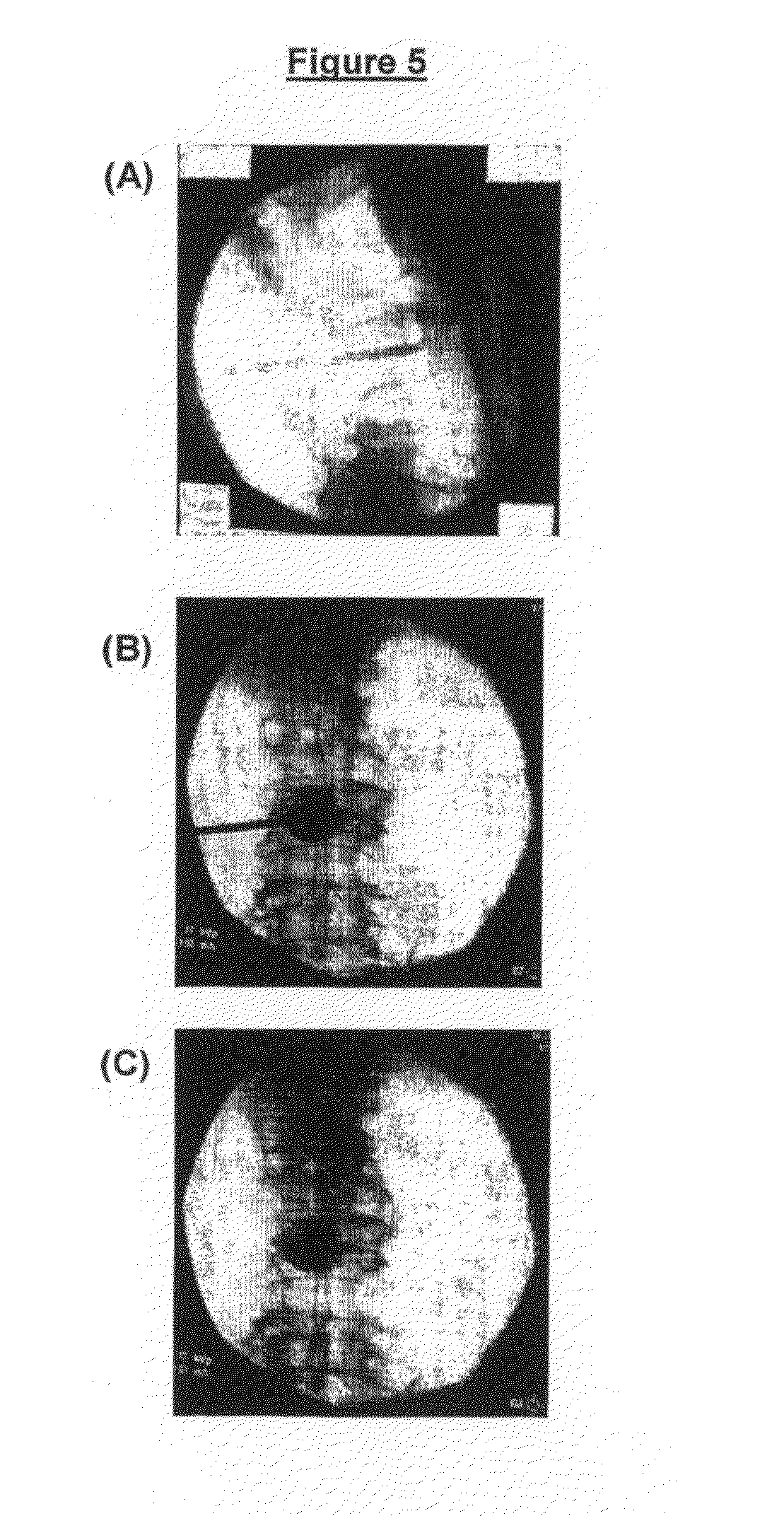Bone and/or dental cement composition and uses thereof
a technology of dental cement and composition, which is applied in the field of bone and/or dental cement composition, can solve the problems of poor interaction between the implant and the host bone, the solidified cement is very stiff, and the complications manifest with deeper understanding of the material
- Summary
- Abstract
- Description
- Claims
- Application Information
AI Technical Summary
Benefits of technology
Problems solved by technology
Method used
Image
Examples
example 1
a) Preparation of Low Molecular Weight Chitin (LMW Chitin)
[0254]4.0 g of purified, chitin powder was placed in a 250 mL round-bottom flask (RBF) containing 120 mL of concentrated HCl solution (37%). The RBF was placed in a water-bath at 40° C. and stirring commenced to initiate hydrolysis. After 10 min, the flask was transferred into an ice-bath for cooling down and then the solution was poured into a 600 mL beaker. The hydrolyzed chitin solution was neutralised with 33.3% (w / w) NaOH solution in the ice-bath under magnetic stirring yielding a white precipitate that concomitantly formed a milky solution. The solution was centrifuged, the residue collected and dialyzed against water for 2 days, and lyophilized to obtain hydrolyzed chitin powder.
b) Synthesis of Low Molecular Weight Chitin Methacrylate (LCMA)
[0255]Esterification of the carboxylic group and hydroxyl group in the presence of N,N-dicyclohexylcarbodiimide and 4-dimethylaminoamine is a traditional method that can be conducte...
example 2
Preparation of Composition, Formulation 1
[0257]0.2 g of chitin methacrylate as prepared in Example 1 was dissolved in a solution of 2.0 g of ultra-pure water and 3.0 g of poly(ethylene glycol) diacrylate with continuous stirring to make a viscous gel-like solution. A mixture of 3.2 g of hydroxyapatite and 0.8 g of barium sulfate was prepared and added to the viscous solution to make a fine paste without until no obvious granules were observed. 100 μl of ammonia persulfate (APS) (150 mg in 1 ml H2O) was dropped into the paste and the mixture was stirred vigorously for 45 seconds. Thereafter, 50 μl of N,N,N′,N′-Tetramethylethylenediamine (TEMED) (200 μl in 1 ml H2O) was added to the mixture. The paste was then ready for injection.
example 3
Preparation of Composition, Formulation 2
[0258]0.2 g of chitin methacrylate as prepared in Example 1 was dissolved in a solution of 2.0 g of ultra-pure water and 3.0 g of poly(ethylene glycol) diacrylate with continuous stirring to obtain a viscous gel-like solution. A mixture of 3.6 g of hydroxyapatite and 0.4 g of barium sulfate was prepared and added to the viscous solution to make a fine paste until no obvious granules were observed. 100 μl of APS (150 mg in 1 ml H2O) was dropped into the paste with vigorously stirring for 45 seconds, followed by the addition of 50 μl of TEMED (200 μl in 1 ml H2O). The paste was ready for injection.
[0259]For the present formulation, the ratio of hydroxyapatite to barium sulphate was changed as compared to that in formulation 1 to study the difference in visualisation of cement under x-ray as shown in FIG. 4.
PUM
| Property | Measurement | Unit |
|---|---|---|
| molecular weight | aaaaa | aaaaa |
| molecular weight | aaaaa | aaaaa |
| average molecular weight | aaaaa | aaaaa |
Abstract
Description
Claims
Application Information
 Login to View More
Login to View More - R&D
- Intellectual Property
- Life Sciences
- Materials
- Tech Scout
- Unparalleled Data Quality
- Higher Quality Content
- 60% Fewer Hallucinations
Browse by: Latest US Patents, China's latest patents, Technical Efficacy Thesaurus, Application Domain, Technology Topic, Popular Technical Reports.
© 2025 PatSnap. All rights reserved.Legal|Privacy policy|Modern Slavery Act Transparency Statement|Sitemap|About US| Contact US: help@patsnap.com



